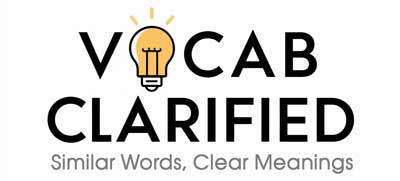Have you ever been confused between the terms “adsorb” and “absorb”? While they might sound similar, these words describe two distinct processes that are often discussed in scientific contexts.
Let’s dive into the details of these terms and explore how they differ.
Understanding Adsorb And Absorb
Adsorb: Definition and Usage
“Adsorb” refers to the process where molecules, atoms, or ions adhere to the surface of a material. This process is surface-based, meaning the particles attach themselves to the outer layer of another substance rather than being integrated throughout it.
Adsorption is commonly discussed in fields such as chemistry, environmental science, and catalysis.
For example:
- Activated charcoal adsorbs impurities from water, trapping them on its surface.
- Silica gel adsorbs moisture from the air, helping keep products dry.
Absorb: Definition and Usage
On the other hand, “absorb” describes a process where a substance is taken up internally by another material.
In this case, the molecules, atoms, or ions penetrate and spread throughout the absorbing material. Absorption is a term frequently used in various disciplines, including physics, biology, and environmental science.
For instance:
- A sponge absorbs water, soaking it up entirely.
- Skin absorbs lotion, allowing it to penetrate into the deeper layers.
Side-by-Side Comparison
To further clarify the differences, here’s a side-by-side comparison:
| Aspect | Adsorb | Absorb |
| Definition | Molecules adhere to the surface of a material | Molecules penetrate and spread throughout |
| Common Usage | “The activated charcoal adsorbed the toxins.” | “The sponge absorbed all the water.” |
| Key Differences | Surface-level process | Internal penetration and distribution |
When deciding between “adsorb” and “absorb,” consider the context of the interaction. If the process involves surface attachment, “adsorb” is the correct term.
However, if it involves complete uptake into another substance, “absorb” is more appropriate.
Everyday Usage Examples
Both “adsorb” and “absorb” fit into everyday language, particularly in scientific or technical contexts. Here are some examples to illustrate their usage:
- Adsorb: Activated carbon filters adsorb contaminants from drinking water.
- Absorb: Towels absorb moisture quickly, making them essential after a shower.
- Adsorb: The air purifier uses a filter to adsorb harmful particles.
- Absorb: Plants absorb sunlight and convert it into energy through photosynthesis.
- Adsorb: Silica gel packs adsorb humidity, protecting electronics from moisture damage.
- Absorb: Paper towels absorb spills, keeping surfaces clean and dry.
Conclusion
Understanding the difference between “adsorb” and “absorb” is crucial, especially in scientific discussions. While both processes involve the interaction of materials, “adsorb” is limited to surface-level adherence, whereas “absorb” involves internal penetration and distribution.
Choosing the right term depends on the nature of the process you’re describing. Next time you encounter these terms, you’ll know exactly which one to use based on the context.

